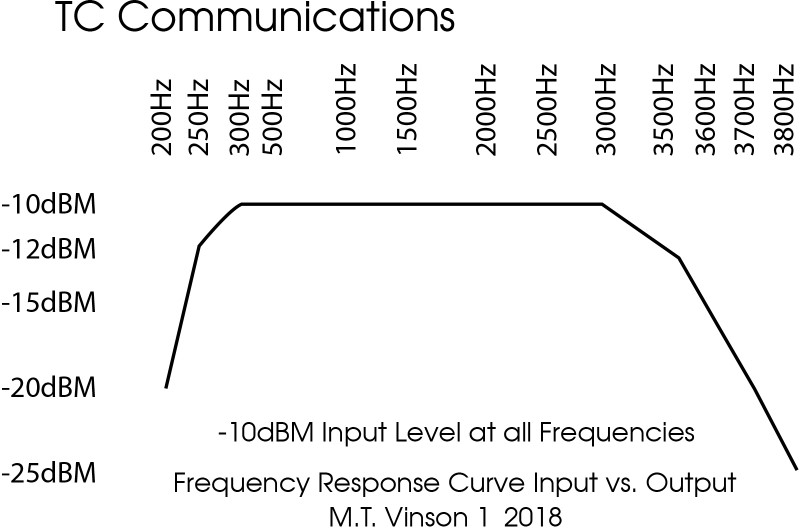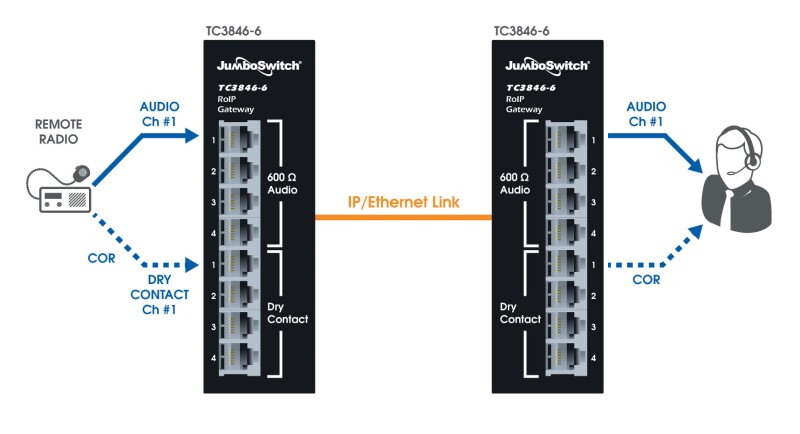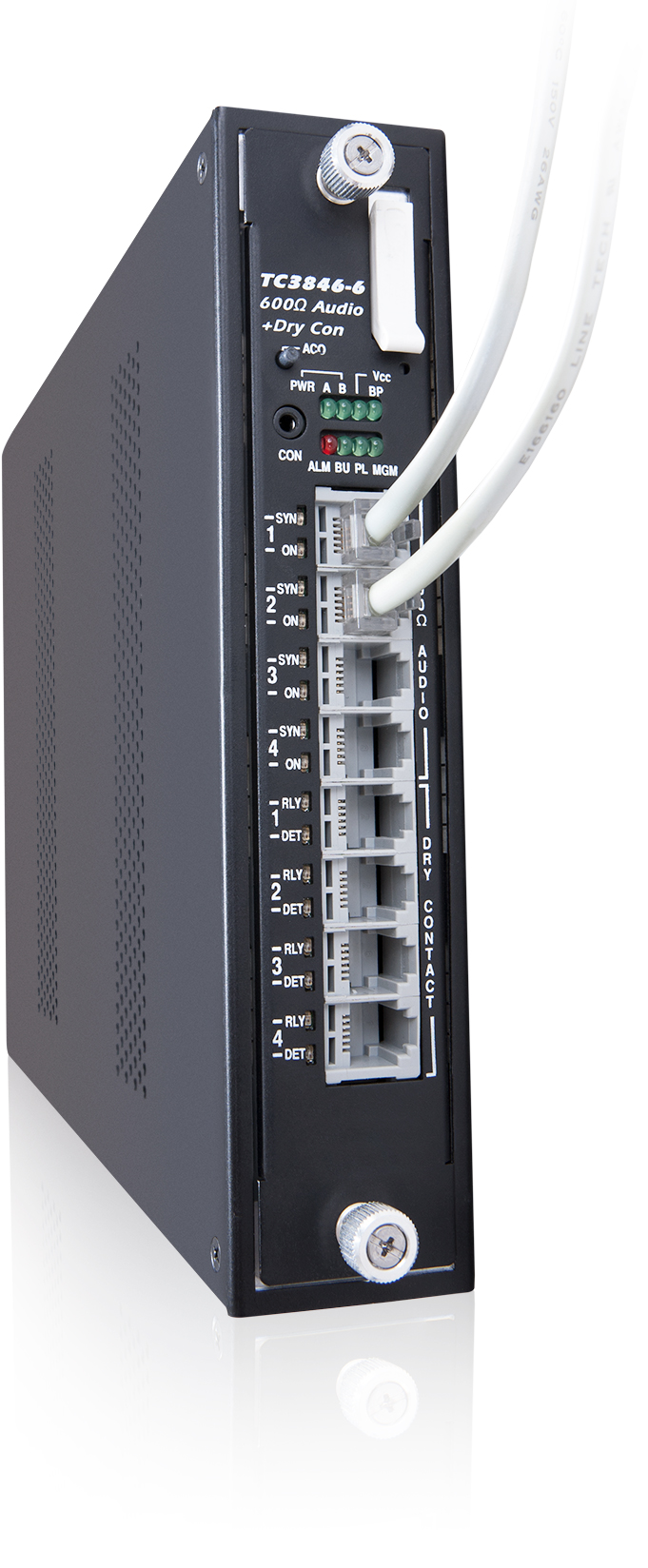TC3846-6 RoIP Gateway, Product Review
Feb. 2nd, 2018
Martin T. Vinson, N.C.T., A.S.C.E.T.
Certified Engineering Technician
International Association of Radio and Telecommunications Engineers
American Society of Certified Engineering Technicians
To resolve problems with noisy signals coming from various base stations we decided to relocate several VHF control stations to remote locations across the county. This sounds simple, but it required us to identify/purchase equipment capable of transporting the audio and control signaling from the dispatch center to the various remote locations.
Our plan includes the use of microwave radio and standard internet connections to transport the audio and data between the various locations. This becomes more complicated by the fact the system uses both discrete control signaling and EIA tone remote control between the radio console and the various control stations.
Past experience with "Ethernet radio boxes" has demonstrated issues sending EIA tone signaling from one end to the other. When the audio is compressed the control tones are often distorted causing problems with the decoders. The compression can also cause changes in levels that interfere with the decoder's ability to properly distinguish between the function and guard tones. Likewise the same compression can affect the quality and levels of paging tones sent by the console. This can lead to problems with the pagers and handheld radios used by the various volunteer fire departments. The need for consistent audio levels and quality become more stringent with the advent of narrow-band audio requirements.
Having previously tested and used components from other vendors, we decided to test the products available from TC Communications. These boxes are amazing! The usable audio response is from below 300Hz. to well above 3000Hz. The audio begins to roll off below 300Hz, but still passes audio below 200Hz. On the high end the audio starts rolling off around 3150Hz., but is still usable to roughly 3500Hz. By the time you get to 3800Hz the output level is 10dbm below the input level. The boxes will easily pass the 2175Hz. tone commonly used with EIA tone control products with no changes in level or quality of waveform.
As advertised, the audio detection LED pops up with an input level just below -30dbm (I saw them coming on at -32dbm, which maybe within the error range of my testing method and equipment). That's cool, because you can tell if the pilot tone from a voter receiver is present just by looking at the LED (pilot tones are generally at -20dbm and either 1950 Hz. or 2175Hz). You can also tell whether a base station is keyed because the LED will illuminate if the 2175Hz guard tone is present (also at -20dbm). In the case of discrete signaling you can easily tell if a relay is picked just be checking the status of the corresponding LED on the front panel.
In testing the audio response from end to end I used frequencies ranging from 300Hz. to 3000Hz. I saw zero distortion in the waveform regardless of frequency or level. As advertised the boxes are 1-in, 1-out. The output audio tracked perfectly against the input audio and the response was linear from negative 30dbm to plus 5dbm with no distortion and no compression. In all cases the output levels than were within 1dbm of the corresponding input level.
Over the past thirty-five years I have used similar boxes from other vendors for similar applications. But I have never seen one that would produce such a linear, uniform audio transmission from one end to the other - especially across an IP link. The ability of the box to maintain a consistent latency from one end to the other makes it a practical replacement for older technologies, including the replacement of legacy synchronous circuits such as a T1. Overall it's an impressive piece of equipment.
Thanks for letting me demo this stuff- I know these will do what we need at Carroll County. You can expect an order from them in the near future.
Additional Info
TDM-over-IP for RoIP, a Better Alternative
Many Radio over IP solutions are SIP based. SIP and VoIP can cause audio compression and have difficulty handling variation in latency. For a reliable and clear audio channel particularly for critical communications, TDM over IP technology is a better alternative.
Clear uncompressed audio, passing tones, and voter comparator compatibility can be achieved by using TDM over IP technology when designing a RoIP device for critical communications.
TDM over IP is a technology where it emulates Time Division Multiplexing over a packet switched network. TDM over IP takes a real-time bit stream and packetizes it. When combined with a special clock recovery scheme called Adaptive Clock Recovery* (ACR), this solution provides a low-latency, reliable solution for clear Analog audio and tones over an IP network.
As a result, TDM over IP transported analog voice data is identical to a conventional Telco's 600 ohm leased copper line. This technology has been used for many years to transport T1 or E1 over Ethernet.
*ACR is used to recover the clock by counting the bits in the data stream which is extracted from packets received.
Clear uncompressed audio, passing tones, and voter comparator compatibility is done with a TDM over IP solution. Features include:
Uncompressed 64kbps 2/4-wire analog circuit: complies with G.711 standard
Bi-directional Dry contacts: operates in parallel with analog circuit
Low latency: offers minimum one-way delay (1msec)
Simple and flexible configurations: offers point-to-point or point-to-multipoint analog circuit configurations via WebUI or CLI
Ruggedized and Reliable: designed and produced as industrial grade communication products
SLA monitoring: offers latency, PL and BU performance indicators
Management: offers both in-band and out-of-band management
The TC3846-6 Analog to IP Gateway offers a true TDM over IP (600 ohm Analog to IP) solution.
For a typical critical radio network using voters to extend coverage, the TC3846-6 Analog and Dry Contact-over-IP Gateway can be configured to provide a reliable and effective communication link as shown in Figure 1.
Audio signals between radio systems are transported over the TC3846-6's uncompressed analog over IP channel (indicated as Audio Ch#1 in Figure 1). The device offers audio ports for either 2-wire or 4-wire interfaces that can be linked to form a point-to-point or point-to-mulitpoint topology.
The analog channel's one-way delay performance is 7msec by default. Depending on the radio system application requirements, the one-way channel delay can be adjusted on a Latency Level between 1msec to 45msec. The TC3846-6's low delay performance is extremely beneficial for applications that incorporate voter, simulcast, and PTT/COR signaling.
In PTT/COR, the DC signal which is typically a critical requirement, is transported over the bi-directional Dry-Contact channel (indicated as "Dry Contact Ch#1 in Figure 1). Dry Contact channels operate in parallel, and in sync, with analog channels on the TC3846-6. The uncompressed 64kbps analog circuit also supports tone signaling by default with no additional configuration required.
Features
- Analog direct to IP with uncompressed DS0 (64Kbps)
- Supports Tone Remote, PTT/COR operation and Guard/Pilot Tones
- 1 to 4 Scalable Channels of Analog and E&M over IP
- Compatible with JPS SNV-12 voter and other voters
- Compatible with Ethernet LAN/WAN and MPLS
Technical Advantages
- TDM over IP based technology, not SIP or VoIP based
- Linear audio frequency response from 300Hz to 3000Hz
- Zero volume distortion from -30dbm to +5dbm
- 1:1 amplification and uncompressed voice
- 1950Hz and 2175Hz Pilot Tones pass through without distortion
- LEDs illuminate when volume is above -30dbm, including Pilot Tones
- PTT channel paired with each analog channel
- 1 msec latency with well managed IP network
- Supports simulcast
- Local or remote broadcast capability
Interested in similar content? Subscribe to our mailing list.



